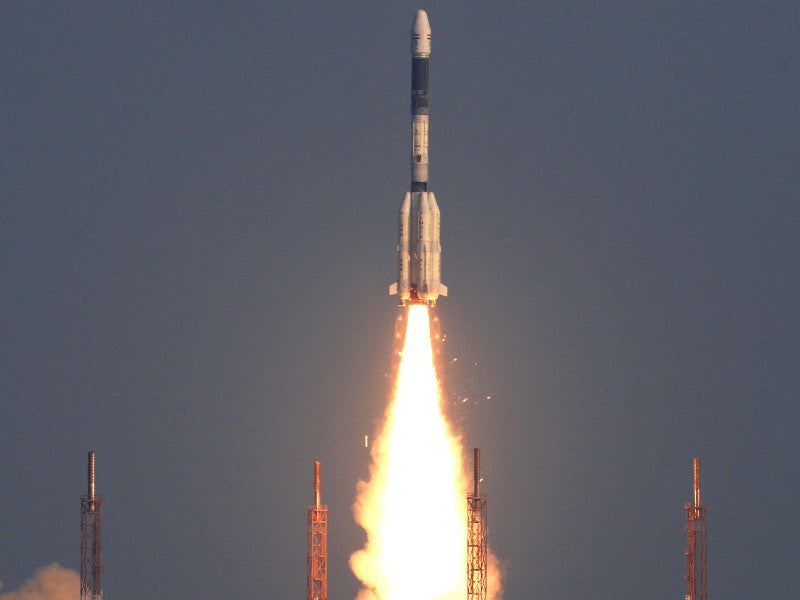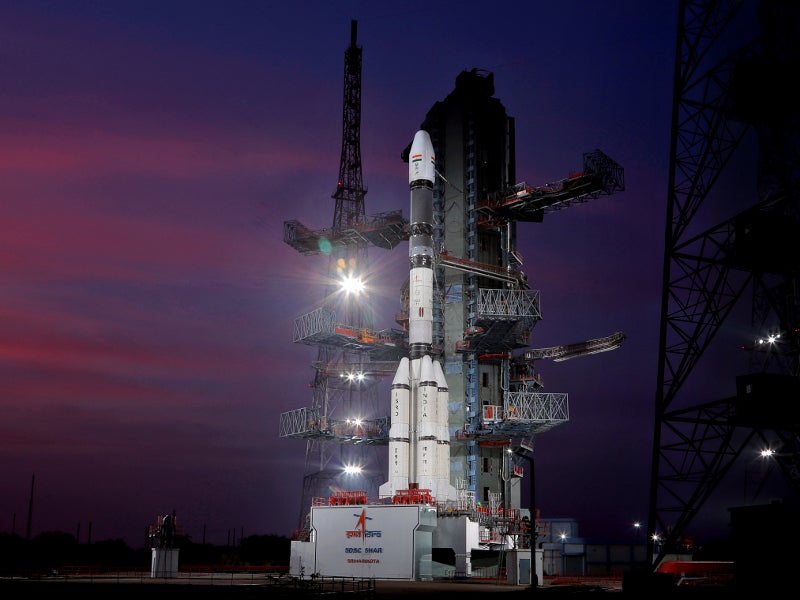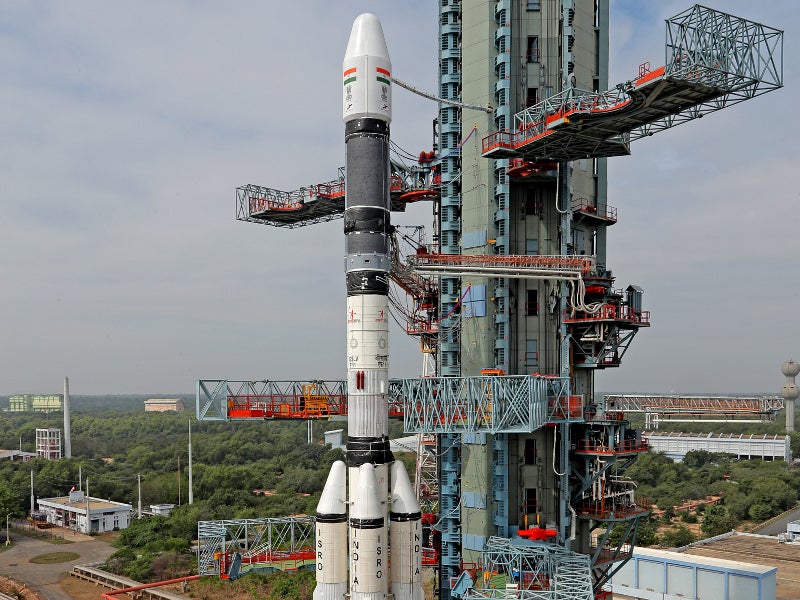SAT-7A is the latest addition to the GSAT series of geosynchronous communications satellites designed and manufactured by Indian Space Research Organisation (ISRO).
The 7A satellite was launched from the second launch pad (SLP) of Satish Dhawan Space Centre (SHAR) at Sriharikota in Andhra Pradesh, India, in December 2018.
It was placed at an inclination of 19.5º in the geosynchronous transfer orbit (GTO) and is planned to be injected into geostationary orbit upon completion of orbit-raising manoeuvres.
GSAT-7A satellite is operated by the Indian Air Force (IAF) and provides communications in Ku-band spectrum across the country.
It also aims to enhance IAF’s global operations and network-centric warfare capabilities, alongside the service’s future communication satellite GSAT-7C.
With a launch mass of 2,250kg, GSAT-7A is the heaviest satellite launched by a GSLV rocket with an indigenously built cryogenic upper stage. It is the 39th communication satellite developed by ISRO and the 39th communications satellite indigenously developed by ISRO for India.
GSAT-7A communications satellite design and features
The GSAT-7A communications satellite is based on the standard I-2000kg (I-2K) satellite bus developed by ISRO. I-2K plays the role of a communication hub or the service module for the satellite.
It uses a chemical propulsion system, rated at 3.3kW, for orbit-raising and orbit altitude or position changes. The satellite has an operational mission life of eight years.
Communication capabilities of the GSAT-7A satellite
GSAT-7A military communications satellite is equipped with ten Ku-band communication transponders, a Gregorian reflector antenna, and two solar panel arrays.
The Ku-band communication capability offers improved satellite uplink and downlink signals compared to C-band transponders. It facilitates cross-connectivity between airbases situated at various locations and ground radar stations.
The satellite offers a constant connectivity link to control station with the airborne early-warning and control aircraft participating in the mission to improve India’s attack capabilities.
It increases operational range and flexibility of IAF’s current and future satellite-controlled unmanned aerial vehicles (UAVs) such as armed Predator-B or Sea Guardian, which can destroy enemy fortifications from long distances.
GSAT-7A also assists the Indian Navy in minimising over-reliance on ground control stations for controlling military UAVs.
Launch details
GSAT-7A satellite was launched by ISRO’s Geosynchronous Satellite Launch Vehicle-F11 (GSLV-F11) fourth-generation launch vehicle.
The launch was performed in three stages, with the first stage powered by a solid propellant rocket motor and four liquid propellant strap-on boosters.
A high-thrust engine using liquid propellant equips the centre stage of the GSLV-F11 launch vehicle, while the final stage, also known as the cryogenic upper stage, is powered by an indigenously-built cryogenic engine.
The launch vehicle has an overall height of 50.92m, while the diameter of the payload fairing is 3.4m.
The strap-on boosters were ignited 4.8 seconds prior to the lift-off. The first stage separation was completed after 151.2 seconds of launch and the payload fairing separation took 234.7 seconds for completion.
The separation of second stage was performed after 294.86 seconds, while the cryogenic upper stage shut-off took place after 1,137.7 seconds of launch. The satellite was separated from the launch vehicle after 1,152.7 seconds.











